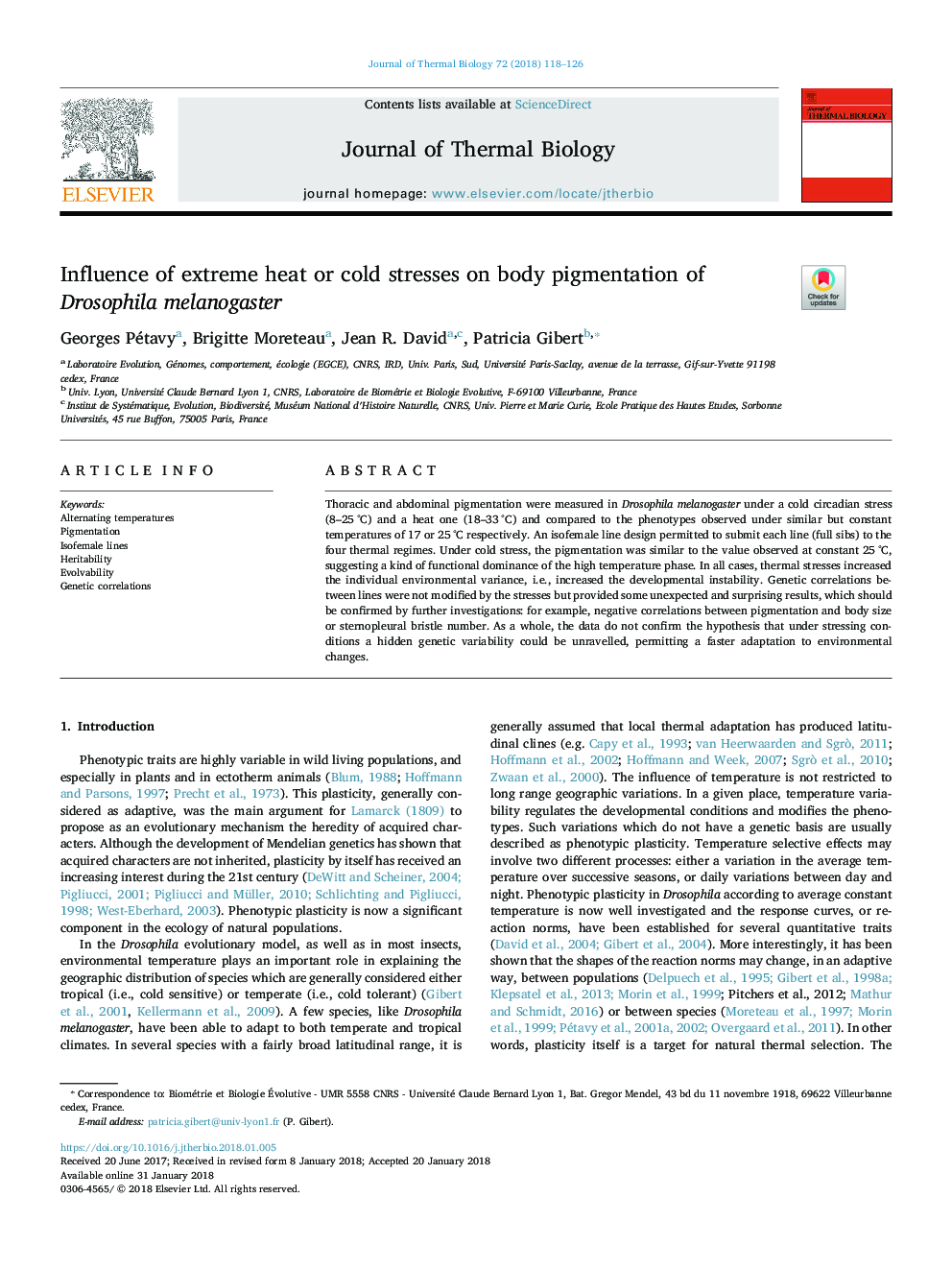| Article ID | Journal | Published Year | Pages | File Type |
|---|---|---|---|---|
| 8650106 | Journal of Thermal Biology | 2018 | 9 Pages |
Abstract
Thoracic and abdominal pigmentation were measured in Drosophila melanogaster under a cold circadian stress (8-25â¯Â°C) and a heat one (18-33â¯Â°C) and compared to the phenotypes observed under similar but constant temperatures of 17 or 25â¯Â°C respectively. An isofemale line design permitted to submit each line (full sibs) to the four thermal regimes. Under cold stress, the pigmentation was similar to the value observed at constant 25â¯Â°C, suggesting a kind of functional dominance of the high temperature phase. In all cases, thermal stresses increased the individual environmental variance, i.e., increased the developmental instability. Genetic correlations between lines were not modified by the stresses but provided some unexpected and surprising results, which should be confirmed by further investigations: for example, negative correlations between pigmentation and body size or sternopleural bristle number. As a whole, the data do not confirm the hypothesis that under stressing conditions a hidden genetic variability could be unravelled, permitting a faster adaptation to environmental changes.
Related Topics
Life Sciences
Agricultural and Biological Sciences
Agricultural and Biological Sciences (General)
Authors
Georges Pétavy, Brigitte Moreteau, Jean R. David, Patricia Gibert,
